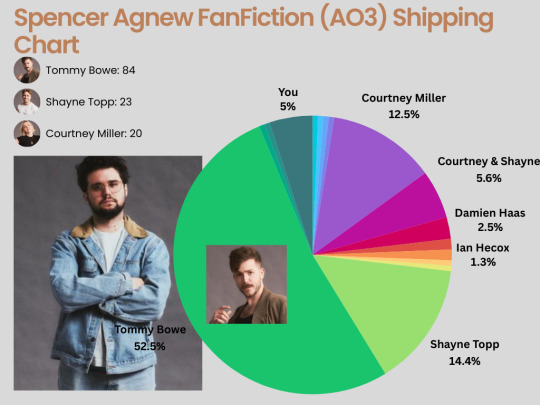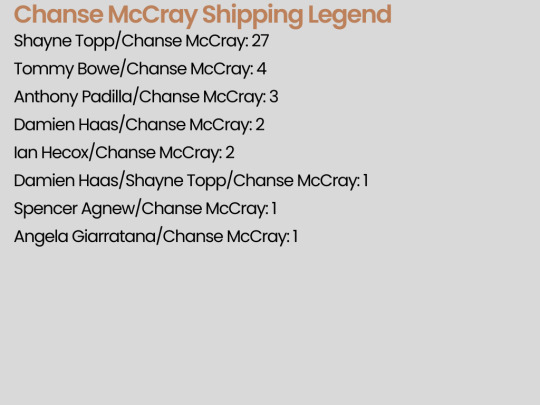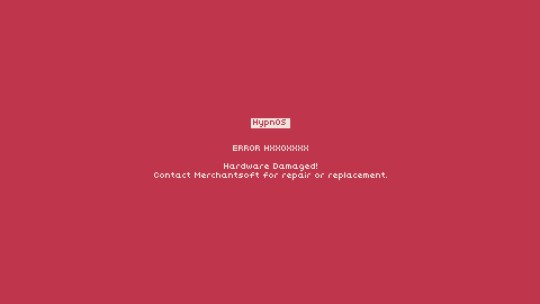#Data Maintenance
Explore tagged Tumblr posts
Text
Data Visualization Deep Dive: Mastering the Art & Science of Data Visualization and Storytelling | PiLog Group
Intoday’s data-driven world, raw numbers and analytics can often overwhelm decision-makers. This is where data visualization and storytelling play a transformative role. Visualizing data effectively isn’t just about creating attractive charts — it’s about telling a story that drives actionable insights.
In the insightful video titled “Data Visualization Deep Dive | Mastering the Art & Science of Data Visualization & Storytelling”, experts break down the essential techniques and strategies to present data in a clear, engaging, and impactful way.
Watch the Full Video Here:
youtube
Why Data Visualization Matters More Than Ever
Simplifies Complex Data: Visual tools make it easier to understand and communicate intricate datasets.
Enables Faster Decision-Making: Clear visuals allow stakeholders to identify patterns and insights quickly.
Enhances Data Storytelling: Data visuals turn raw figures into compelling narratives.
Improves Engagement: People process visuals 60,000 times faster than text.
Key Takeaways from the Video:
Understand the Science Behind Visualization: Learn the principles of human perception and how they influence data interpretation.
Master Data Storytelling Techniques: Combine data, visuals, and narratives to drive impactful messages.
Choose the Right Visualization Tools: Identify which charts and graphs best fit your data story.
Avoid Common Mistakes: Learn about misleading visuals and how to ensure clarity and accuracy.
Create Actionable Insights: Transform complex datasets into meaningful and understandable visuals.
Don’t Miss Out on These Insights: Watch the Video Now
Who Should Watch This Video?
Business Analysts: Elevate your presentations and reports with effective visuals.
Data Scientists: Communicate findings in a clear and engaging manner.
Students & Educators: Enhance teaching materials with impactful visuals.
Business Leaders: Make data-driven decisions with clarity and confidence.
Tech Enthusiasts: Learn the power of visualization in driving innovation.
Best Practices for Effective Data Visualization
Know Your Audience: Tailor your visuals based on who will view them.
Focus on Clarity: Avoid clutter and unnecessary elements in your visuals.
Tell a Story: Every chart or graph should have a clear takeaway message.
Use the Right Tools: Choose software that fits your visualization goals.
Maintain Consistency: Use uniform styles, colors, and fonts throughout.
How Data Visualization Impacts Modern Businesses
Enhanced Decision-Making: Data becomes easier to interpret, leading to smarter choices.
Improved Collaboration: Teams can align better with clear visual communication.
Greater Transparency: Visuals make it easier to spot trends and anomalies.
Strategic Growth: Businesses can identify opportunities and threats faster.
Why This Video is a Must-Watch

Watch Now and Transform How You See Data: Data Visualization Deep Dive | Mastering the Art & Science of Data Visualization & Storytelling
Let us know your thoughts and favorite takeaways from the video in the comments below. How do you plan to use data visualization in your work?
#data visualization#data visualisation#data communication#data storytelling#data science#data management#data governance#data maintenance#dr. imad syed#piloggroup#drimadsyed#dataengineering#datadriven#data scientist#big data#Youtube
1 note
·
View note
Text
Supercharge Your Data: Advanced Optimization and Maintenance for Delta Tables in Fabric
Dive into the final part of our series on optimizing data ingestion with Spark in Microsoft Fabric! Discover advanced optimization techniques and essential maintenance strategies for Delta tables to ensure high performance and efficiency in your data Ops
Welcome to the third and final installment of our blog series on optimizing data ingestion with Spark in Microsoft Fabric. In our previous posts, we explored the foundational elements of Microsoft Fabric and Delta Lake, delving into the differences between managed and external tables, as well as their practical applications. Now, it’s time to take your data management skills to the next…
#Advanced Techniques#Apache Spark#Big Data#Cloud Data Management#Data Compaction#Data Efficiency#Data Maintenance#Data management#Data Optimization#Data Performance#Data Retention#Data Scalability#Delta Lake#File Size Optimization#Handling Deletes#Merge Optimization#Microsoft Fabric#Optimize Write#Partition Pruning#Real-Time Data#Schema Evolution#Vacuum Command#Z-Ordering
0 notes
Text
Spencer Agnew's shipping data analytics on fanfiction (AO3)


Chanse McCray's shipping data analytics on fanfiction (AO3)


Arasha Lalani's shipping data analytics on fanfiction (AO3)


-Note: Romantic pairings exclusive
-This is accurate to August 15: 12:26 PM-2:14 PM (PST)
-In the analytics this includes characters they play
-Fanfictions will appear multiple times based on how many relationship tags it appears in
-Disclaimer: This is not meant to comment on which ship is better and nor is anything listed supposed to prove something.
General Thoughts: With how much Spencer content I see on social media I expected Spencer x You to be at least third. Spommy was not a surprise, just didn't know it took up 50%+.
I swear Chanse's analytics mainly being Shayne is because of the Love is Blind episode.
Arasha is the first pie chart that actually doesn't have a significant lead over 2nd/3rd place.
-Amanda Lehan-Canto & Angela Giarratana version
-Shayne Topp version
-Ian Hecox version
#spencer agnew#chanse mccrary#arasha lalani#spommy#shaynse#arangela#courtrasha#smosh rpf#because shipping them is rpf yes#pie chart#data analytics#made 3 before Ao3 is temporarily down for maintenance or whatever tomorrow#had to take a pause on making stuff because i moved and had a minor injury at work#those two are separate it just sounds like a clause of events#i'll stop rambling now
72 notes
·
View notes
Text

quelle horreur !
#i doubt i can stay up long enough for the maintenance to finish.....#i forgot how long it takes.........i could have saved my data and just cribbed off the office wifi tomorrow......................#i am.......le fool#gamelogging#i'll take a lil nap haven't had dinner yet anyway
2 notes
·
View notes
Text
i saw not one but TWO red tailed hawks on the roadside today. crucial news for yall.
#dagger chatter#birding adventures#idk if its bc im on data or bc of merlin’s maintenence but i couldnt use the step by step id?#but based on likely birds for today & my area im preeeetty sure thats what they were!!!
12 notes
·
View notes
Text
re: the dreamliner incident today tho I gotta say the causal sequence required for 1) the glass cockpit to "blank out" and 2) this to result in an abrupt and violent loss of altitude which 3) turns out to be totally recoverable almost beggars belief. haven't heard of something like this short of catastrophic mechanical failure or some kinda fly-by-wire runaway trim situation (which.. if your fly-by-wire system has "blanked out"... idk boss)
#text#very curious to see what comes of the cvr and data recorder for this one#a different breed of problem from the MAX assembly line issues or united maintenance#been busy all day catching up on shit x_x#could be wishful thinking since im on a dreamliner in ~three weeks#like did my guy just bump the autopilot or what
15 notes
·
View notes
Text

2 notes
·
View notes
Text
I crave to create, but alas I am yet another victim to this mortal coil <- literally did statistical analysis for 4 hours with only one break to eat dinner
#and I have to go to bed eeeeeaaarrrllllllyyyy cause I have to go to work an hour earlllly tomorrow#cause fuck yall (work) I'm not staying late I will just chug an ungodly amount of caffeine and do this god damn 8 hour heat run#but hey: that means quiet morning where I can blast my music without anyone telling me no#only supervisor in the building is gonna be the maintenance supervisor and I know he isn't gonna care#I get an hour of (insert nu metal bands and whatever the fuck else here) and some god damn PEACE#or I will just listen to Flamingo on repeat for an hour idfk#oh wait I haven't listened to metallica or pink floyd in a while those are options too#W A I T#okay okay listen listen look my taste in music is divorced parents with an extra dash of divorced dad so hear me out right right#SEETHER--#*starts scream singing remedy at the top of my lungs*#okay anyway gn i'm so fucking sleep deprived lmao#data log: personal
5 notes
·
View notes
Text
Czarina-VM, study of Microsoft tech stack history. Preview 1

Write down study notes about the evolution of MS-DOS, QuickBASIC (from IBM Cassette BASIC to the last officially Microsoft QBasic or some early Visual Basic), "Batch" Command-Prompt, PowerShell, Windows editions pathing from "2.11 for 386" to Windows "ME" (upgraded from a "98 SE" build though) with Windows "3.11 for Workgroups" and the other 9X ones in-between, Xenix, Microsoft Bob with Great Greetings expansion, a personalized mockup Win8 TUI animated flex box panel board and other historical (or relatively historical, with a few ground-realism & critical takes along the way) Microsoft matters here and a couple development demos + big tech opinions about Microsoft too along that studious pathway.
( Also, don't forget to link down the interactive-use sessions with 86box, DOSbox X & VirtualBox/VMware as video when it is indeed ready )

Yay for the four large tags below, and farewell.
#youtube#technology#retro computing#maskutchew#microsoft#big tech#providing constructive criticisms of both old and new Microsoft products and offering decent ethical developer consumer solutions#MVP deliveries spyware data privacy unethical policies and bad management really strikes the whole market down from all potential LTS gains#chatGPT buyout with Bing CoPilot integrations + Windows 8 Metro dashboard crashes being more examples of corporate failings#16-bit WineVDM & 32-bit Win32s community efforts showing the working class developers do better quality maintenance than current MS does
5 notes
·
View notes
Text
The Voyager missions are still functioning, in part, because of a team of dedicated scientists fluent in computer languages no one uses anymore except for these two missions, who have turned off all non-essential systems in order to allow the gradually reducing power outage of the plutonium battery to continue to power what few experiments remain and the communication arrays.
They are wonderful machines! And, yes, built to last, but they require maintenance. They are no longer doing all the cool stuff they originally did. A lot of work goes into maintaining these machines.
I totally get wanting a refridgerator that will outlive you, or a phone that will still be going strong in 10 years time, but like, you can do this now. My dad regularly takes apart our tumble dryer to replace worn bearings or burnt out heating elements. Fridges and phones are more complicated, but it can be done. There are replacement operating systems for phones that will allow them to continue to get safety updates. There are people who repair fridges.
You can do this, but it will require you to put effort in yourself rather than wait for a company to do it for you.
"well youve had it 6 years that's a good amount of time for that kind of thing to work"
"you should be grateful you got 3 years of use out of that thing, I'm lucky if mine last a year haha"
listen, in 1977 nasa launched the voyager spacecrafts to take advantage of a planetary alignment that takes place every 175 years. These 2 crafts were planned to flyby the outer planets of our solar system and gather data on them to send back to us. Voyager 2 launched first on the 20th of August despite its name because it was planned to reach our gas giants after its counterpart voyager 1, which launched a little later on the 5th of September.
The voyager mission was planned to end 12 years later in 1989. In that time, voyager 1 and 2 passed by Jupiter, Saturn, Uranus, and Neptune. They discovered new moons, confirmed theories about Saturn's rings, found the first active volcanoes found outside the earth, and they take close-up images of planets only seen at that point from telescopes.
On the 25th of August 1989, voyager 2 encounters Neptune, the last planet in our solar system the voyagers will meet. And that was that. End of mission. Now obsolete.
~
Less than 1 year later on valentine's day in 1990 voyager 1 looked back on the planet that had built it and sent with it a world's worth of hopes and dreams and took a picture. We called it the solar system family portrait and in it, we see ourselves. The pale blue dot nestled in the darkness of space
And then commands were sent to shut down their cameras. Preserve fuel.
35 years after launch, in 2012 voyager 1 sent back to us data about interstellar space. The very first manmade object to enter it.
41 years after launch voyager 2 did the same. Still operational, still going. Still sending back to us invaluable data, teaching us about our own solar system and the suns influence in our local bubble of space.
They are expected to continue to operate until the year 2025 - almost 50 whole years after they were launched and 36 years after their mission was supposed to have ended.
48 years of harsh space travel, battered by solar winds, pulled by gravity but fast enough just to escape, pelted by who knows how much space dust and radiation.
And even after that, they still have a purpose. Each craft was given a golden record. A disc filled with human knowledge and knowledge of humans and the planet they live on. Greetings and well-wishes to any prospective extraterrestrial life that could potentially pick it up. Co-ordinates, an invite. Samples of our music, the things we love, sounds of the earth, a story of our world. The surf, the wind, birds and whales, images of a mother, our moon, a sunset. Long after the voyager spacecrafts go dark, probably long after we are gone, they will still be doing their job; educating a species about our very tiny corner of the galaxy.
They are nasa's longest-running operation.
And it was all done using 70s technology.
So excuse me if I want a phone that lasts more than 2 years or a vacuum cleaner that doesn't break down after 6, or god fucking forbid, a refrigerator that will keep my food cold my entire fucking lifetime.
#I feel like I might be coming across a bit rude but like#idk the voyager thing rubbed me up the wrong way#a LOT of very skilled people work EXTREMELY hard to keep the voyager missions communicating with us and taking data#it is VERY impressive but it doesn't stay that way without maintenance!#This is why they cancelled the chandra mission despite the most expensive part of the mission being already done with#continuing to use a space instrument has maintenance costs#even if the science is really cool that has to be weighed against increasing budget constraints
17K notes
·
View notes
Text
5 Early Signs You Need Product Engineering Services for Your Software Project
Is your software project veering off course more often than not? You’re not alone. Many teams struggle to maintain clarity, velocity, and technical confidence during software development. That is what comes in with Product Engineering Services. These are services well beyond coding as it is strategy-driven, design-driven, and engineering-based to achieve scalable, user-centric solutions.
In case your team already contemplates Custom Software Development Services or researches Digital Product Development, it is important to know when you should introduce the idea of cooperating with a product engineering partner.
Let’s look at five clear signs you need help—before things go from complex to chaotic.

1. Your MVP is Still “In Progress” After Months
You started with a simple idea. Maybe even a clear prototype. But weeks turned into months, and your MVP is nowhere near ready. If your development cycle keeps dragging or pivoting without clarity, it’s a red flag.
Why it matters:
You’re losing time-to-market advantage, and possibly funding. A product engineering partner can bring lean methodology, technical mentorship, and sprint discipline to get your MVP moving forward again—with the right features, not just any features.
2. Your Teams Don’t Speak the Same Language
Product, design, engineering, and marketing often start aligned but end up disconnected. Developers may focus on feasibility, while product managers chase deadlines, and designers push for ideal UX. If your standups sound like four different teams building four different products, it’s time to pause.
What you need:
Cross-functional alignment. Product engineering services bridge business goals with tech execution. They act as a shared language between stakeholders, creating a roadmap everyone understands—from CTOs to junior developers.
3. You’re Rebuilding the Same Thing (Again)
Does this sound familiar? You release a feature, get feedback, and realize it wasn’t built for scale—or users didn’t actually want it. So you rebuild. And again. And again. This development loop is more common than you’d think, especially when skipping validation steps or scalable design systems.
What you’re missing:
End-to-end thinking. Product engineering includes research, architecture planning, and user feedback loops—so you build once, build right, and scale confidently.
4. You’re Not Sure What to Measure
Your product is live. Traffic looks okay. Users are engaging—but you’re unsure what success means. Without strong telemetry and KPIs tied to user behavior, your team can’t iterate meaningfully. Guesswork starts to replace data.
The fix:
Product engineering teams bake analytics and performance tracking into the product from the start. This turns intuition into insight—fueling decisions with real usage data and enabling smarter iteration in your digital product development journey.
5. Technical Debt Is Slowing You Down
Early shortcuts can become long-term liabilities. If your developers now spend more time fixing bugs, refactoring code, or avoiding “that part of the system,” you’re buried in technical debt.
The solution:
Product engineers think long-term. From scalable architecture to test automation and DevOps pipelines, they create a foundation that grows with you—without constant breakage or emergency patches. They don’t just fix code—they fix how your team writes and ships it.
In Summary
Not every software project needs a full-time product engineering partner from day one. But when early signs like delays, misalignment, or unstable releases start appearing, that’s your signal. By solving them early, it is possible to spend months fixing something that you should have seen coming and secure your product vision.
With Product Engineering Services, you have all the process, expertise, and collaboration that you need to get up and running to build a startup MVP or modernize enterprise systems with confidence.
And speaking of competitive advantage, there are such companies as Arna Softech, the Microsoft Consulting Services partner, you may rely on when you want to achieve synergies between strong engineering performance and sound business processes, particularly when you need to recruit C# developers and ramp up to scale, and become a long-term digital success.
Recent Posted: How Product Engineering Services Deliver: Real Business Outcomes
End-to-End Product Engineering: What It Really Means and Why It Works
#Product Engineering Services#Data Engineering Services#microsoft consulting services#custom software development services#IT Maintenance
0 notes
Text
Top 6 Qualities To Look For When Hiring Asset Data Management Specialists
Hiring asset data specialists with the right mix of skills is crucial to maintaining asset integrity and ensuring compliance in Australia’s high-stakes infrastructure landscape. The six qualities outlined—technical expertise, industry knowledge, attention to detail, problem-solving, and communication—are what separate average hires from high-impact performers. Overlooking any of these traits can lead to costly mistakes, inefficiencies, or regulatory issues.
READ MORE-
#Engineering and Maintenance#Reliability and Maintenance Services#Asset Data Management#Asset Information Management#Design and Drafting Services#Drafting Services in Perth#Convex Engineering Services#Specialised Recruitment Services#Recruitment Agencies Perth#Engineering Consulting Support#Digital Solutions
0 notes
Text
Bridging Smart City Visions and Budgets with a Construction Cost Estimating Service
As cities worldwide shift toward smarter, more sustainable development, the idea of a "smart city" has moved from aspiration to implementation. These urban environments are designed to leverage data, technology, and intelligent infrastructure to improve livability and efficiency. However, turning smart city concepts into real, functional spaces requires more than innovation—it requires precise financial planning. A construction cost estimating service plays a critical role in aligning bold urban visions with practical, achievable budgets.
Understanding the Smart City Framework
Smart cities are built on interconnected systems that include digital infrastructure, energy-efficient buildings, intelligent transportation, and real-time public services. Examples include sensor-based lighting, integrated data platforms, automated waste management, and green infrastructure.
Each element has financial implications, from high-tech installations to long-term maintenance. Cost estimating services help translate these visionary features into actionable plans by forecasting expenses across the project lifecycle.
Challenges of Budgeting for Smart Cities
Smart city projects pose several budgeting challenges:
Technology evolution: Rapid innovation can make systems obsolete mid-project.
Cross-sector integration: Combining infrastructure, software, and construction raises cost complexity.
Data infrastructure: Building digital backbones adds another layer of cost beyond traditional construction.
Long-term sustainability goals: Energy systems and green design often involve higher initial investment.
These challenges make it essential to include experienced cost estimators early in the planning process to anticipate and manage financial complexity.
Benefits of a Construction Cost Estimating Service in Smart City Projects
Translating Vision into Numbers
Convert abstract smart city features into quantifiable line items.
Include software, hardware, and systems integration costs.
Map budgets to both current needs and future scalability.
Balancing Innovation with Cost
Assess value versus cost for smart features like IoT devices or automated systems.
Identify areas where innovation yields the highest return.
Prevent overinvestment in tech that doesn't improve efficiency or performance.
Integrating Infrastructure and Digital Layers
Estimate costs for physical and digital components together.
Include broadband, sensor networks, and control centers in construction budgets.
Forecast long-term operational costs such as data storage, upgrades, and monitoring.
Scenario Modeling for Smart Alternatives
Compare options like smart HVAC vs. conventional systems.
Evaluate solar energy integration versus grid reliance.
Analyze smart parking systems against traditional parking infrastructure.
Creating Adaptable Budgets
Smart cities evolve constantly. What’s innovative today may need updating tomorrow. A construction cost estimating service develops flexible budgets that adapt to:
Phased implementations
Future technology upgrades
Changing regulations or codes
Shifting funding sources
This adaptive budgeting ensures that smart city initiatives stay on course—even in a changing environment.
Collaborating Across Stakeholders
Smart city developments involve a mix of partners:
Government agencies
Private tech firms
Utility companies
Community stakeholders
Cost estimators provide a unified financial picture that all stakeholders can understand. This helps build consensus and trust, especially when projects are funded by public-private partnerships.
Risk Management in Smart Infrastructure
The technical complexity of smart cities increases financial risk. A single system failure could disrupt multiple services. Cost estimators manage these risks by:
Including redundancy costs for critical systems
Building in cybersecurity considerations
Accounting for maintenance, system support, and service contracts
This forward-thinking approach supports not just the build-out of smart infrastructure, but its sustainable performance.
Cost Planning for Sustainable Smart Design
Sustainability is a pillar of smart cities, encompassing:
Energy-efficient building design
Renewable energy integration
Low-impact materials and construction
Green transportation systems
Estimating services align sustainability goals with realistic budgets by:
Forecasting ROI for sustainable features
Incorporating incentives, rebates, and tax credits
Calculating lifecycle cost savings versus upfront spending
Linking Digital Twin Technology with Budget Planning
An emerging tool in smart cities is the "digital twin"—a real-time virtual model of the physical city. These systems help manage infrastructure more efficiently but come at a significant cost.
Cost estimators help:
Quantify the setup and operational cost of digital twins
Align them with existing construction and infrastructure budgets
Model upgrade paths and maintenance needs
This integration ensures the technology’s benefits are achieved without undermining financial feasibility.
Planning for Scalability and Future Growth
Smart cities are designed to grow. Estimators help projects prepare for future demands by:
Including scalable systems in original budgets
Creating allowances for future construction phases
Modeling per-capita infrastructure costs based on projected growth
This long-term outlook prevents underinvestment and supports urban resilience.
Conclusion
Smart cities represent the future of urban living—data-driven, energy-efficient, and responsive to the needs of their populations. But without detailed financial planning, these projects risk becoming too expensive, overly complex, or disconnected from reality.
A construction cost estimating service brings structure and clarity to the process. By accurately forecasting the cost of innovation, integration, and long-term performance, it enables urban planners, engineers, and policymakers to turn smart city concepts into budget-aligned action. In a world where cities must be both intelligent and sustainable, the foundation of success begins with smart estimating.
#smart city#cost estimating#budgeting#urban planning#digital infrastructure#IoT construction#energy efficiency#green building#public-private#lifecycle cost#sustainable urbanism#infrastructure cost#data networks#smart HVAC#digital twins#city design#modular systems#cost forecasting#stakeholder alignment#smart mobility#green infrastructure#urban innovation#adaptive budgets#risk management#maintenance cost#cost modeling#urban resilience#construction pricing#funding strategies#scalable systems
0 notes
Text
Flight Data Monitoring and Analysis Market Soars Amid Rising Investments
Private equity firms injected record funding into flight analytics platforms in H1 2025, driving consolidation as Flight Data Monitoring And Analysis Market share begins to concentrate.
Flight Data Monitoring And Analysis Market revenue forecasts show steady increases as airlines prioritize operational efficiency. Market trends highlight demand for real-time insights and predictive safety analytics.
Get More Insights on - Flight Data Monitoring and Analysis Market

#AI-Driven#Flight Data Analytics#Predictive#Maintenance Aviation Solutions#Flight Data#Monitoring And Analysis Market#Monitoring And Analysis Market Trends#Monitoring And Analysis Market Demand#Coherent#Market Insights#AIDrivenFlightDataAnalytics#PredictiveMaintenanceAviationSolutions#FlightDataMonitoringAndAnalysisMarket#FlightDataMonitoringAndAnalysisMarketTrends#FlightDataMonitoringAndAnalysisMarketDemand#CoherentMarketInsights
0 notes
Text
The AIoT Revolution: How AI and IoT Convergence is Rewriting the Rules of Industry & Life

Imagine a world where factory machines predict their own breakdowns before they happen. Where city streets dynamically adjust traffic flow in real-time, slashing commute times. Where your morning coffee brews automatically as your smartwatch detects you waking. This isn’t science fiction—it’s the explosive reality of Artificial Intelligence of Things (AIoT), the merger of AI algorithms and IoT ecosystems. At widedevsolution.com, we engineer these intelligent futures daily.
Why AIoT Isn’t Just Buzzword Bingo: The Core Convergence
Artificial Intelligence of Things fuses the sensory nervous system of IoT devices (sensors, actuators, smart gadgets) with the cognitive brainpower of machine learning models and deep neural networks. Unlike traditional IoT—which drowns in raw data—AIoT delivers actionable intelligence.
As Sundar Pichai, CEO of Google, asserts:
“We are moving from a mobile-first to an AI-first world. The ability to apply AI and machine learning to massive datasets from connected devices is unlocking unprecedented solutions.”
The AIoT Trinity: Trends Reshaping Reality
1. Predictive Maintenance: The Death of Downtime Gone are days of scheduled check-ups. AI-driven predictive maintenance analyzes sensor data intelligence—vibrations, temperature, sound patterns—to forecast failures weeks in advance.
Real-world impact: Siemens reduced turbine failures by 30% using AI anomaly detection on industrial IoT applications.
Financial upside: McKinsey estimates predictive maintenance cuts costs by 20% and downtime by 50%.
2. Smart Cities: Urban Landscapes with a Brain Smart city solutions leverage edge computing and real-time analytics to optimize resources. Barcelona’s AIoT-powered streetlights cut energy use by 30%. Singapore uses AI traffic prediction to reduce congestion by 15%.
Core Tech Stack:
Distributed sensor networks monitoring air/water quality
Computer vision systems for public safety
AI-powered energy grids balancing supply/demand
3. Hyper-Personalized Experiences: The End of One-Size-Fits-All Personalized user experiences now anticipate needs. Think:
Retail: Nike’s IoT-enabled stores suggest shoes based on past purchases and gait analysis.
Healthcare: Remote patient monitoring with wearable IoT detects arrhythmias before symptoms appear.
Sectoral Shockwaves: Where AIoT is Moving the Needle
🏥 Healthcare: From Treatment to Prevention Healthcare IoT enables continuous monitoring. AI-driven diagnostics analyze data from pacemakers, glucose monitors, and smart inhalers. Results?
45% fewer hospital readmissions (Mayo Clinic study)
Early detection of sepsis 6+ hours faster (Johns Hopkins AIoT model)
🌾 Agriculture: Precision Farming at Scale Precision agriculture uses soil moisture sensors, drone imagery, and ML yield prediction to boost output sustainably.
Case Study: John Deere’s AIoT tractors reduced water usage by 40% while increasing crop yields by 15% via real-time field analytics.
🏭 Manufacturing: The Zero-Waste Factory Manufacturing efficiency soars with AI-powered quality control and autonomous supply chains.
Data Point: Bosch’s AIoT factories achieve 99.9985% quality compliance and 25% faster production cycles through automated defect detection.
Navigating the Minefield: Challenges in Scaling AIoT
Even pioneers face hurdles:ChallengeSolutionData security in IoTEnd-to-end encryption + zero-trust architectureSystem interoperabilityAPI-first integration frameworksAI model driftContinuous MLOps monitoringEnergy constraintsTinyML algorithms for low-power devices
As Microsoft CEO Satya Nadella warns:
“Trust is the currency of the AIoT era. Without robust security and ethical governance, even the most brilliant systems will fail.”
How widedevsolution.com Engineers Tomorrow’s AIoT
At widedevsolution.com, we build scalable IoT systems that turn data deluge into profit. Our recent projects include:
A predictive maintenance platform for wind farms, cutting turbine repair costs by $2M/year.
An AI retail personalization engine boosting client sales conversions by 34%.
Smart city infrastructure reducing municipal energy waste by 28%.
We specialize in overcoming edge computing bottlenecks and designing cyber-physical systems with military-grade data security in IoT.
The Road Ahead: Your AIoT Action Plan
The AIoT market will hit $1.2T by 2030 (Statista). To lead, not follow:
Start small: Pilot sensor-driven process optimization in one workflow.
Prioritize security: Implement hardware-level encryption from day one.
Democratize data: Use low-code AI platforms to empower non-technical teams.
The Final Byte We stand at an inflection point. Artificial Intelligence of Things isn’t merely connecting devices—it’s weaving an intelligent fabric across our physical reality. From farms that whisper their needs to algorithms, to factories that self-heal, to cities that breathe efficiently, AIoT transforms data into wisdom.
The question isn’t if this revolution will impact your organization—it’s when. Companies leveraging AIoT integration today aren’t just future-proofing; they’re rewriting industry rulebooks. At widedevsolution.com, we turn convergence into competitive advantage. The machines are learning. The sensors are watching. The future is responding.
“The greatest achievement of AIoT won’t be smarter gadgets—it’ll be fundamentally reimagining how humanity solves its hardest problems.” — widedevsolution.com AI Lab
#artificial intelligence#predictive maintenance#smart city solutions#manufacturing efficiency#AI-powered quality control in manufacturing#edge computing for IoT security#scalable IoT systems for agriculture#AIoT integration#sensor data intelligence#ML yield prediction#cyber-physical#widedevsolution.com
0 notes
Text
Why Used Nimble Storage & Cisco UCS Servers Are the Hidden Gems of Enterprise IT
Discover the unbeatable value of Used Nimble Storage and Used Cisco UCS Servers, the hidden gems transforming enterprise IT landscapes. At Spectra Technologies Inc, we understand that smart businesses thrive on performance, reliability, and cost-efficiency. That’s why our top-tier refurbished solutions paired with expert support, including EMC Maintenance, DellEMC Maintenance, and IBM Maintenance, deliver unmatched uptime and agility. To get more information about our services, Visit our website!
#server maintenance#ibm maintenance#emc maintenance#hpe 3par maintenance#hitachi data maintenance#buy used hpe
0 notes